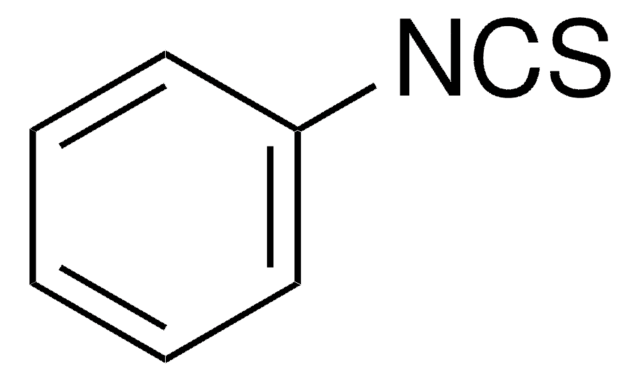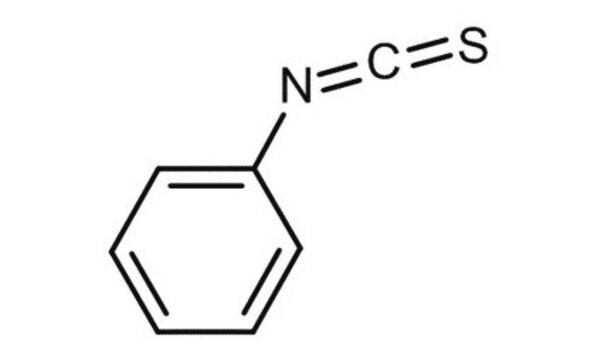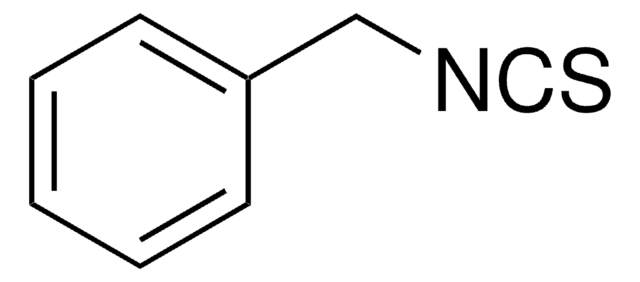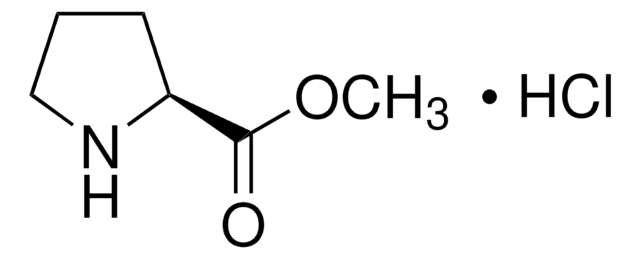P1034
Phenyl isothiocyanate
Sigma Grade, 8.36 M, suitable for solid phase protein sequencing analysis, ≥99% (GC), liquid
Sinonimo/i:
PITC
About This Item
Prodotti consigliati
Grado
Sigma Grade
Livello qualitativo
Saggio
≥99% (GC)
Stato
liquid
Concentrazione
8.36 M
Indice di rifrazione
n20/D 1.6515 (lit.)
P. ebollizione
218 °C (lit.)
Punto di fusione
−21 °C (lit.)
Densità
1.132 g/mL at 20 °C (lit.)
Compatibilità
suitable for solid phase protein sequencing analysis
Temperatura di conservazione
2-8°C
Stringa SMILE
S=C=Nc1ccccc1
InChI
1S/C7H5NS/c9-6-8-7-4-2-1-3-5-7/h1-5H
QKFJKGMPGYROCL-UHFFFAOYSA-N
Cerchi prodotti simili? Visita Guida al confronto tra prodotti
Descrizione generale
Applicazioni
Confezionamento
Ten mL size packaged in screw cap amber vials under argon.
Avvertenze
Danger
Indicazioni di pericolo
Classi di pericolo
Acute Tox. 3 Oral - Resp. Sens. 1 - Skin Corr. 1B - Skin Sens. 1
Codice della classe di stoccaggio
6.1A - Combustible acute toxic Cat. 1 and 2 / very toxic hazardous materials
Classe di pericolosità dell'acqua (WGK)
WGK 3
Punto d’infiammabilità (°F)
190.4 °F - closed cup
Punto d’infiammabilità (°C)
88 °C - closed cup
Dispositivi di protezione individuale
Faceshields, Gloves, Goggles, type ABEK (EN14387) respirator filter
Scegli una delle versioni più recenti:
Possiedi già questo prodotto?
I documenti relativi ai prodotti acquistati recentemente sono disponibili nell’Archivio dei documenti.
I clienti hanno visto anche
Il team dei nostri ricercatori vanta grande esperienza in tutte le aree della ricerca quali Life Science, scienza dei materiali, sintesi chimica, cromatografia, discipline analitiche, ecc..
Contatta l'Assistenza Tecnica.













